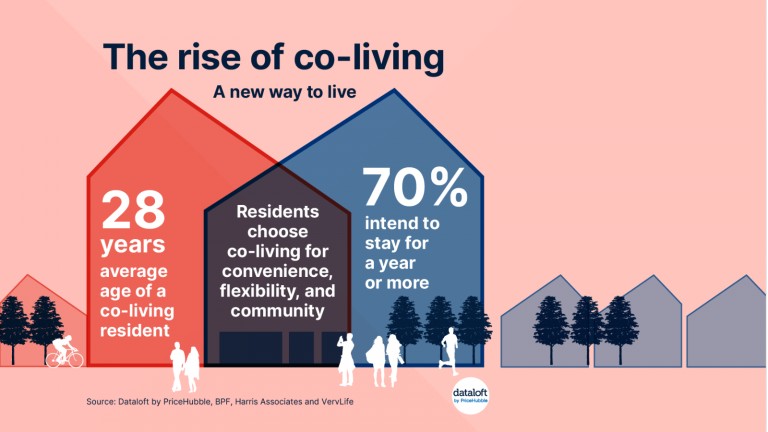Posted on Friday, March 28, 2025

- Many of us have embraced new ways of working in the last few years and now housing providers are offering us a new way to live. Welcome to the idea of ‘Co-living’.
- The London Plan defines co-living as large-scale purpose-built shared living developments of at least 50 units. An alternative to traditional flat shares, they include additional services and facilities, with a minimum tenancy of three months.
- Co-living is not just for the young, the average co-living resident is 28, but 20% are over 35. As the sector grows, there’s scope for age-specific schemes tailored to different demographics. Co-living provides a long-term housing solution, 70% of residents intend to stay for a year or more. It also contributes to housing need, with each co-living unit making a significant impact in meeting demand.
- While co-living can be a cost-effective alternative, it’s about more than just price. Research shows that residents choose co-living for convenience, flexibility, and community. Source: Dataloft by PriceHubble, BPF, Harris Associates and VervLife

